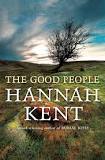After over twenty years of writing my childhood memoir, it has been accepted for publication by Ginninderra Press; should be out about May or June next year. GP is a small independent publisher; here is their profile:
Ginninderra Press, described in The Canberra Times as ‘versatile and visionary’, is an independent book publisher set up in 1996 to provide opportunities for new and emerging authors as well as for authors writing in unfashionable genres or on non-mainstream subjects. In the words of one of our authors, we are ‘a small but significant publisher of small but significant books’.
Unlike most larger commercial publishers, once they accept an ms, they do not work with the author to shape/reshape or change it. This suits me well. I’ve worked and reworked my story so many times, with input from literary agents and publishers as well as a literary editor, I think it’s ready to be born as it is. Whatever its limitations or lacks, I know it has enough worth to be accepted for itself.
Last year I reworked it twice with the literary editor, and wove in my mother’s story of the place we knew, in her own voice. I used her handwritten memoirs, started when she was in her 70s at my urging, and unfinished, as well as my own imagining and archival research. My voice takes over when I am about five years old. The story of childhood goes up to my senior years in boarding school and start of university life. The last part of the memoir has reflections from later stages of my life, and a letter to my mother, who died in 1982. The theme that ties these threads together is the power of a place — a small marginal farm on the Hay plains — to hold people there through years of drought, the Depression, more drought, stock losses, and, when I was seven years old, the abdication of my father from the place and our lives. My mother and I stayed on, and with the help of my brothers in school and university holidays, we worked the farm until my father returned (while I was away at boarding school) and forced my mother to leave. After she left with a couple of suitcases, he sold the farm, and she had to take him to court to get a share of the sale price.
We never returned; yet that place is in my heart, and has shaped my sensibility and my imagination. I know my mother mourned it for the rest of her life. A question that the memoir seeks to answer is: what drew her there in the first place, and what kept her there through those difficult, often heartbreaking years?
The image below is my pastel painting of the Hay plains, in a paddock where Patterson’s Curse, aka Salvation Jane, has taken over. It is from a photo taken by my friend Rob Olver on a trip through Hay about four years ago.
Here is the prologue to This Place You Know.
If you visit the Hay plains at night when people and the animals they tend are asleep, you will, if you walk far enough, come across a curious sight. An old woman, wrinkled and skinny, sits on a patch of red earth, her head bent, intent on a patient and silent task. Her fingers, knotted and twisted, move nimbly back and forth. It is not wool she is shaping into a simple chained fabric that gleams silvery-grey in the moonlight, but vegetable matter that she unwinds from a large irregular ball lying on the bare earth beside her. Her fingers twist in and out, and the soft, earthy smelling fabric falls on the red soil, spreading over it, cloaking it with a damp, springy, resilient cover. Soon the bare patch is clothed, and she winds up the ball and pokes it into a string bag she slings over her shoulder. She scrambles up and walks with the help of a knotted stick to another bare patch, and squats, muttering a few sounds in a guttural tongue, laying her stick and bag beside her. She begins again her endless task of restoring a moist, living cover to the plains ravaged by harsh sun and wind and many cloven hooves.





